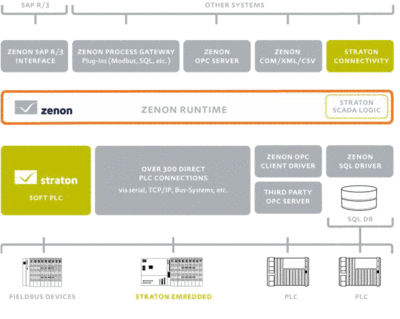This blog post is for beginners who are interested in learning about PLC and SCADA, but they are confuses or not sure where to start. After read this post you will be able to identify the most basic components of a PLC system and can also know about the basic purpose and function of PLCs (and PACs). In this post I have cover all the basic about PLCs (and PACs).
What is PLC?
PLC stands for Programmable Logic Controller or programmable controller are small industrial digital computers which have modular components designed to control the manufacturing processes. PLCs are often used in factories and industrial plants to control light, motors, fans, pumps, circuit breakers and any other activity that requires high reliability control and ease of programming and process fault diagnosis. To understand the purpose of PLCs better, let’s look at a brief history of PLCs.
History of PLC-
Industrial automation started well before PLCs. In the right on time to mid 1900s, automation was typically done utilizing muddled electromechanical communicate circuits. Be that as it may, the measure of relays, wires and space expected to make even straightforward automation was risky. A large number of relays could be important to robotize a basic industrial facility process! Furthermore, if something in the intelligent circuit should have been changed?
In 1968 the first programmable logic controller came along to substitute complex transmit circuitry in industrial plants. The PLC was intended to be effortlessly programmable by plant architects and specialists that were at that point acquainted with transfer rationale and control schematics. Since the starting PLCs have been programmable utilizing stepping stool rationale which was intended to imitate control circuit schematics. The stepping stool graphs look like control circuits where control is spilling out of left to directly through shut contacts to empower a hand-off loop.
In the above diagram, you can see ladder logic looks like simple control circuit schematics where input sources (switches, push-buttons, proximity sensors, etc) are shown on the left and output sources are shown on the right.
How Do PLCs Work?
There are many PLCs components, but only these below three are most important of them:
PLCs are most complicated and powerful digital computers but here we can describe the function of a PLC in simple terms. The PLC takes inputs & performs logic in the CPU and then turns on or off outputs based on that logic.
See the flowchart below for a visual representation of the steps above.
What is PLC?
PLC stands for Programmable Logic Controller or programmable controller are small industrial digital computers which have modular components designed to control the manufacturing processes. PLCs are often used in factories and industrial plants to control light, motors, fans, pumps, circuit breakers and any other activity that requires high reliability control and ease of programming and process fault diagnosis. To understand the purpose of PLCs better, let’s look at a brief history of PLCs.
History of PLC-
Industrial automation started well before PLCs. In the right on time to mid 1900s, automation was typically done utilizing muddled electromechanical communicate circuits. Be that as it may, the measure of relays, wires and space expected to make even straightforward automation was risky. A large number of relays could be important to robotize a basic industrial facility process! Furthermore, if something in the intelligent circuit should have been changed?
In 1968 the first programmable logic controller came along to substitute complex transmit circuitry in industrial plants. The PLC was intended to be effortlessly programmable by plant architects and specialists that were at that point acquainted with transfer rationale and control schematics. Since the starting PLCs have been programmable utilizing stepping stool rationale which was intended to imitate control circuit schematics. The stepping stool graphs look like control circuits where control is spilling out of left to directly through shut contacts to empower a hand-off loop.
In the above diagram, you can see ladder logic looks like simple control circuit schematics where input sources (switches, push-buttons, proximity sensors, etc) are shown on the left and output sources are shown on the right.
How Do PLCs Work?
There are many PLCs components, but only these below three are most important of them:
- Processor (CPU)
- Inputs
- Outputs
PLCs are most complicated and powerful digital computers but here we can describe the function of a PLC in simple terms. The PLC takes inputs & performs logic in the CPU and then turns on or off outputs based on that logic.
- The CPU monitors the status of the inputs (ex. switch on, proximity sensor off, valve 40% open, etc.)
- The CPU takes the information that it gets from the inputs, performs logic on the inputs
- The CPU operates the outputs logic (ex. turn off motor, open valve, etc.)
See the flowchart below for a visual representation of the steps above.
Conclusion: Now
you have better understanding of what PLCs are and how they work. Now you can
start your PLC course. This was basic concept and was most important to know
before start PLC training.
















